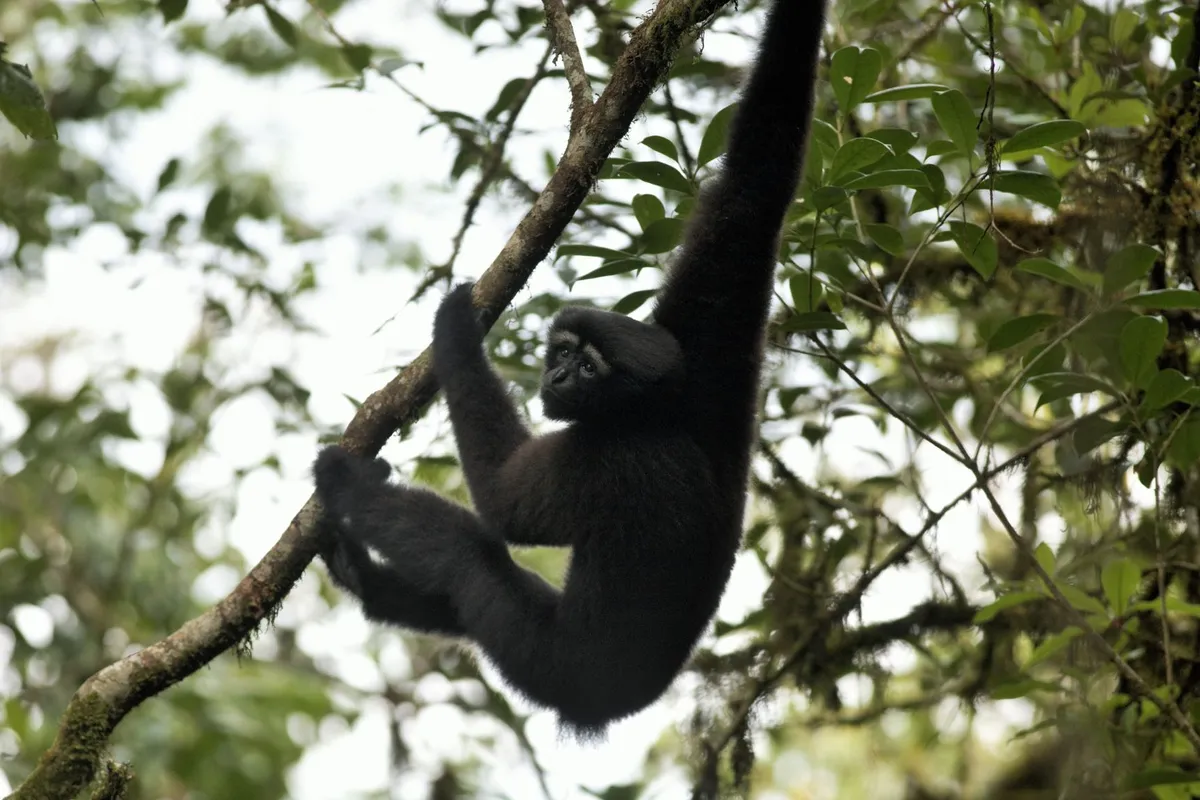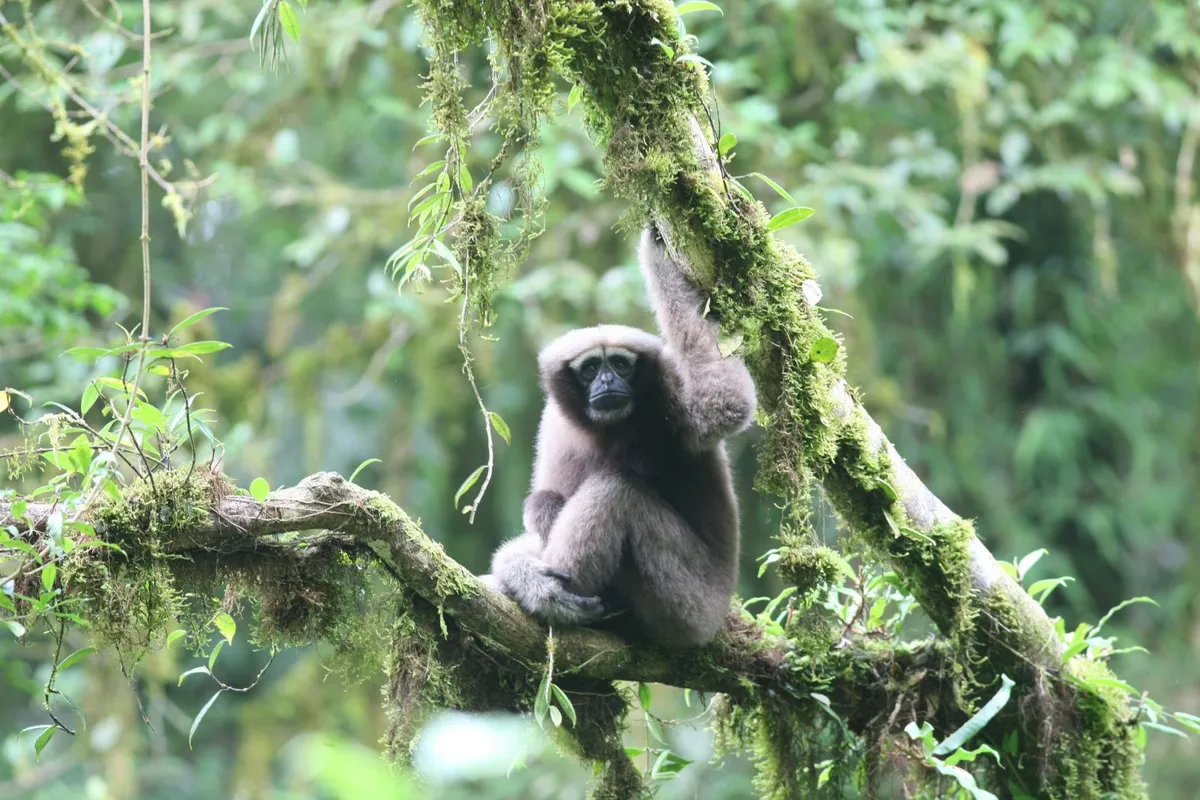[social_warfare]
The Echoes of Survival: The Skywalker Gibbons of Myanmar
In the verdant jungles of Myanmar, a recent discovery has not only expanded our understanding of biodiversity but has also ignited hope for conservationists globally.
The Skywalker gibbons, a species first identified in China in 2017 and named with a nod to the Star Wars saga, have now been confirmed to inhabit the remote forests of Myanmar.
This finding is a critical step in ensuring the survival of a species that mirrors the traits of resilience and uniqueness akin to their cinematic namesake.
Discovery and Identification
The journey to this significant discovery began with acoustic monitoring of the gibbons’ haunting morning songs, a method that allowed researchers to pinpoint their presence without direct visual contact.
This non-invasive technique captures the essence of modern conservation efforts—blending technology with traditional fieldwork.
The use of DNA analysis from discarded plant material further solidified the presence of 44 new groups of Skywalker gibbons in Myanmar, a testament to the meticulous and innovative approaches adopted by the research teams from Fauna & Flora and Nature Conservation Society Myanmar.

READ NEXT: GET TO KNOW THE SPIDER MONKEY
Characteristics and Challenges
Skywalker gibbons (Hoolock tianxing) are distinguished from their close relatives by subtle yet distinct physical differences such as thinner eyebrows and a darker beard, which are not just mere aesthetic details but are adaptive traits honed by evolution.
Despite their enchanting presence, these primates are under siege from an all-too-common enemy: habitat loss. With Myanmar’s existing protected areas covering a mere 4% of suitable gibbon habitat, the challenges are daunting.
The forests that cradle these gibbons are vanishing, sliced away by deforestation and degraded by human encroachment.

Conservation Efforts and Future Prospects
The discovery has sparked a broader conservation dialogue, emphasizing the need for a dual approach combining government-led protection with community-based conservation initiatives.
Local communities have shown a willingness to engage, with some expressing interest in establishing community protected areas and launching conservation awareness programs aimed at curbing poaching.
This collaborative spirit is essential, as the preservation of the Skywalker gibbon isn’t just about saving a species but about maintaining the ecological balance they help sustain.
The plight of the Skywalker gibbons serves as a poignant reminder of our intertwined destinies with the natural world. These creatures, with their distinct songs and familial groups, are not just inhabitants of their forests but are custodians of their ecosystems.
Protecting them is a moral imperative that transcends borders and species—a call to action to preserve the rich tapestry of life that, once unraveled, cannot be rewoven.
Source: Discover Wildlife

